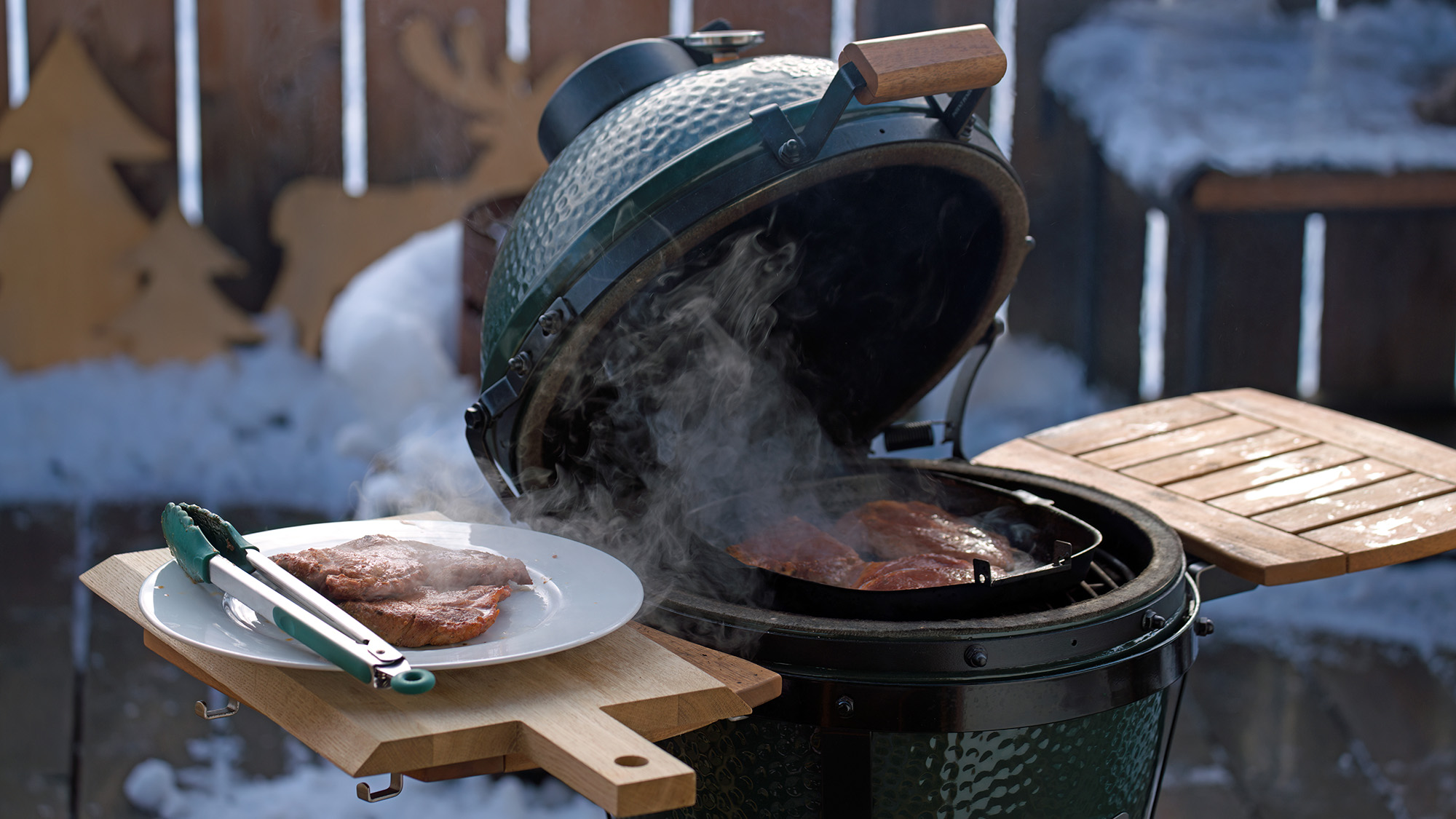
If you love the flavor of food cooked on one of the best grills, you don’t need to wait until the spring arrives. While you might be hankering after meals cooked with a flame-grilled taste, you can continue to relish the distinct flavor all year round.
Even when winter comes and it’s chilly outside, you can make the most of your outside grill, with the advantage of knowing that you won’t have any fellow chefs telling you when your steak needs turning!
Although you might be wearing a few more layers than in the warmer seasons, and your backyard might be covered in snow, there’s no reason why you can’t fire up your grill. Here, grilling experts share their top tips on how to get the most out of your grill in winter.
1. Get cozy
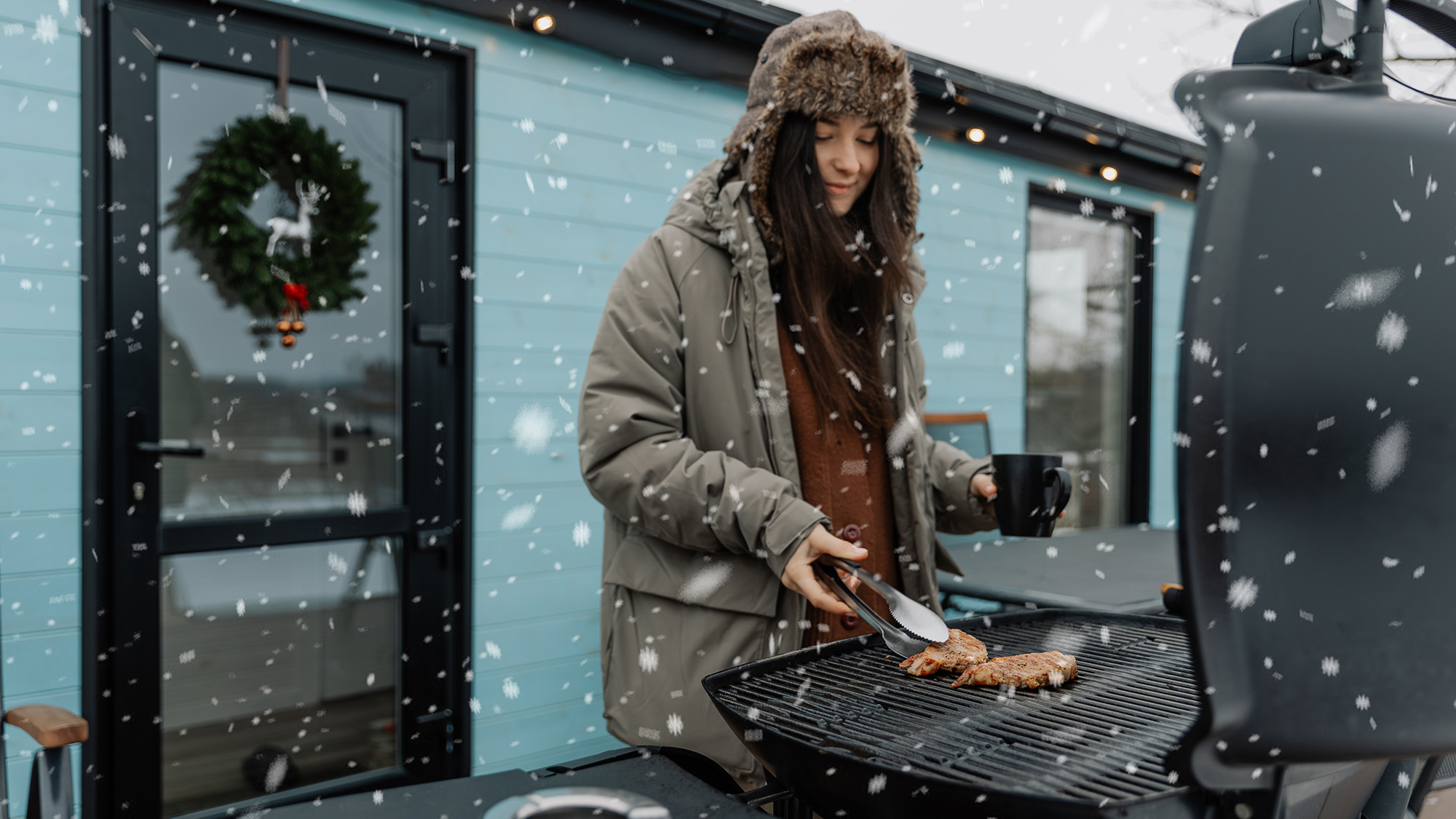
It’s no good if you’re cooking on your grill and shivering while watching your food sizzling on a hot grill. Dan Cooper, culinary manager at Weber, says, “When grilling in colder months, ensure you’re wrapped up in warm clothing.”
Grab those extra layers before venturing outside, and put on a hat and some cozy footwear. Although Cooper warns, “Avoid loose items that could dangle and come into contact with the grill,” adding, “Safety and comfort go hand in hand when enjoying winter grilling.”
2. Position your grill safely
To shield yourself from the cold, it’s tempting to position your grill as close to your house as possible, but you do need to be aware of the dangers.
Cooper advises, “Position your barbecue close to your house for convenience, but always ensure it’s at a safe distance from walls, fences, or other flammable structures.”
Ben Forte, known online as chef BBQ Forte, gives similar advice, “You’ll want your grill in easy-dash distance if the elements really kick up,” and adds, “A level, non-flammable surface close to a door for easy access is perfect.”
There are also other dangers to be aware of. “Grilling in an enclosed space is dangerous, increasing the risk of fire and carbon monoxide poisoning. Ensure your barbecue is in a well-ventilated outdoor area to enjoy a safe and successful grilling experience,” says Cooper.
Top tip
If grilling near your house, Forte recommends using a dry charcoal, such as Kamado Joe's, $22 for 20lbs at Amazon, which doesn’t release much smoke. This will limit the amount of the smoke that enters your home.
3. Light up
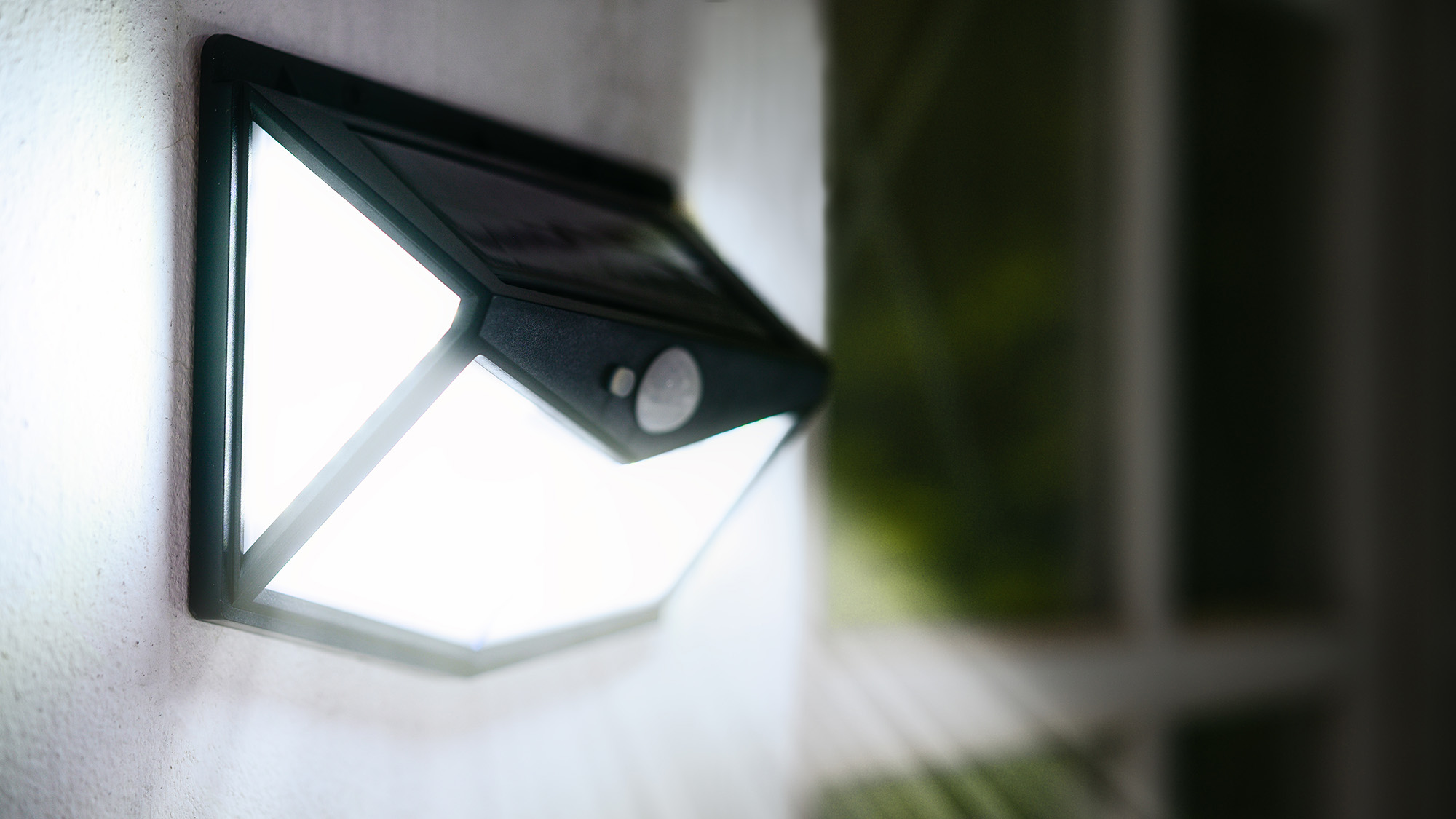
If you’re cooking in the late afternoon and evening, you’ll need to think about outside lighting. Otherwise, Forte says, “You won’t know when your meat is perfectly caramelized.”
If you don’t have fixed outside lights or solar lights to brighten up your outside cooking area, Forte recommends an LED beanie hat, which will leave your hands free to turn meat and handle heavy pots without holding a torch. You could try Night Scope’s Classic Rechargeable LED Warm Knit Beanie Head Light Hat, for $24 at Amazon.
Alternatively, you could use a light designed to attach to your grill, such as Weber’s Grill’ n Go Light, $40 at Amazon.
4. Consider what you cook
“Barbecue is the best way to transform humble food into something magical —perfect for winter when we’re all craving comforting bowl food and hearty meals,” says Forte.
Instead of going for thinner cuts that take less time to cook, he suggests going for “cheaper, larger cuts of meat and gnarly root veg that you can throw over a low heat and practically forget about it.”
So, instead of staying outside to constantly check your food, he suggests choosing products you can leave for 5 or 6 hours. “A little extra cooking time can transform ingredients into something new and infinitely more delicious,” he says.
What’s the best cut of meat for winter grilling? “Make use of those tougher cuts of meat that have the fat and fibers to melt down over a long period of time,” says Forte. “Buy bone-in cuts for maximum flavour — they’re usually cheapest too.”
If that hasn’t got you craving for a grill, his next suggestion certainly will. “Make a huge pot of succulent lamb shank tagine — packed full of fudgy prunes and caramelized onions — beautiful when kissed with smoke. Or a pork shoulder rotisserie that slowly drips its juices over a tray of potatoes.”
Taking the time to slow cook the food will reap rich-tasting rewards. With Forte’s suggestions, you can “make enough so you can eat today, tomorrow, and later on in the week - or fill the freezer for chilly winter days.”
5. Preheat your grill for longer
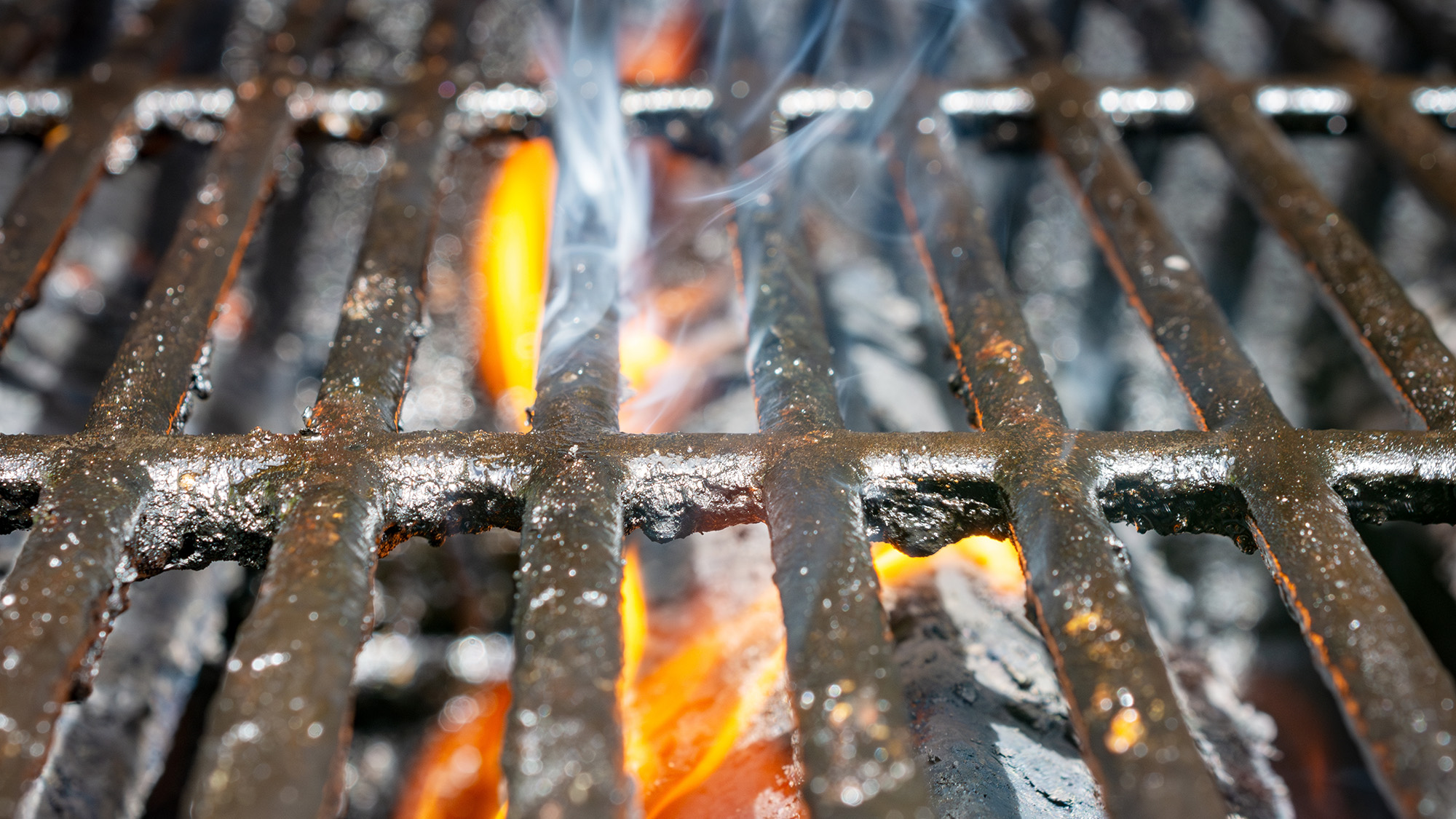
Although Forte says grills should only take between 10-15 minutes to preheat and don’t need to be given any extra time to reach temperature in winter, Cooper says it's worth giving yourself more time.
“In colder temperatures, preheating your grill may take longer, and food might require extra cooking time. This isn’t a bad thing — it gives flavors more time to develop, while the moist winter air inside the cook box ensures your meats and veggies stay juicy and tender,” says Cooper.
He also says that your grill may require more fuel to reach and maintain the right temperature and suggests stocking up on extra charcoal, briquettes, or propane to avoid running out of fuel mid-cook.
Where you place your grill can also make a difference. “Positioning your barbecue in a sheltered spot can also help maintain consistent temperatures, even in windy conditions,” Cooper adds.
6. Close the lid
If you‘re wondering whether to cook with the grill hood up or down, Forte has the answer. “If you’re looking, you ain’t cooking,” says Forte. “The lid down creates a chamber of heat — just like your oven.”
Cooper also adds, “Cooking with the lid down is essential. It helps food cook evenly, retains delicious flavors, and prevents flare-ups by regulating oxygen flow. Keeping the lid down is especially important during winter grilling to maintain consistent temperatures.”
Forte also explains that the ventilation vents control the amount of oxygen that feeds the fire, allowing you to precisely control the temperature of the grill. And he advises, “When you finish cooking, just close the vents off to kill the fire and use the charcoal another day.”
7. Choose your fuel carefully
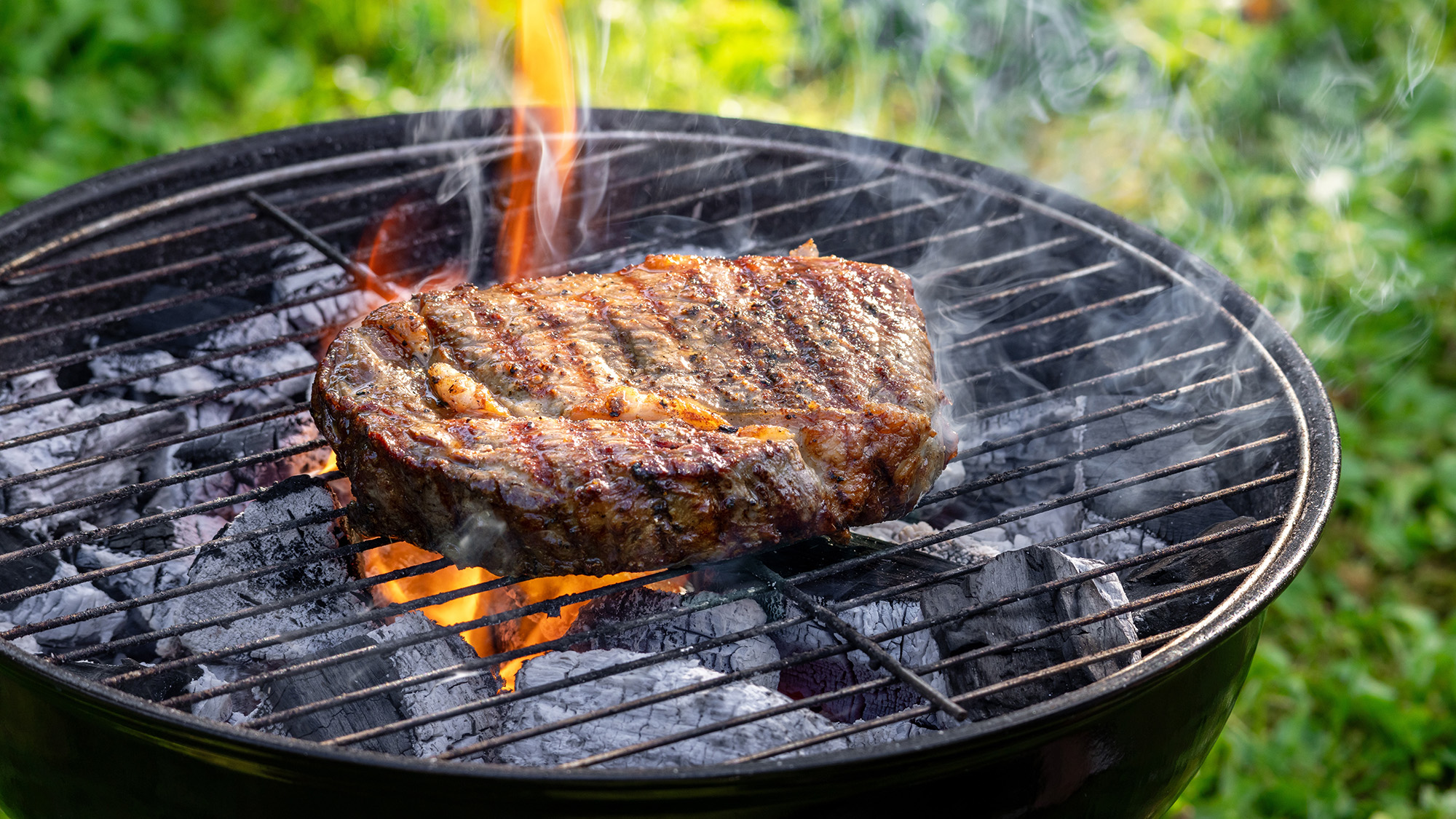
The fuel you choose will have a big impact on the flavor of your food, which is why Forte advocates investing in quality. “Cheap charcoal is a false economy. Buy the good stuff and you’ll never look back.”
He suggests using big block charcoal because it comes in “large chunks that will take a long time to break down. A handful will cook for at least 10 hours — and see you through a second cook.”
If you want to infuse a little more smoke into your food, he suggests adding a wood chunk into the charcoal to add an extra dimension to the smoke.
8. Consider smart grilling
A smart grill could be a luxury purchase if you prefer to have a helping hand with your grilling. It will take you through the steps to achieve perfectly cooked meat if you are new to grilling or prefer to have a reminder of what to do.
“Smart grilling technology can be a game-changer during colder months as you can let it do the hard work for you while you enjoy the warmth inside your home,” says Cooper.
At Tom’s Guide we’ve tested and reviewed Brisk It’s Origin 580 grill, which we recommend as the best smart grill in our buying guide. It's used alongside the BriskIt smartphone app.
9. Protect your grill from the elements
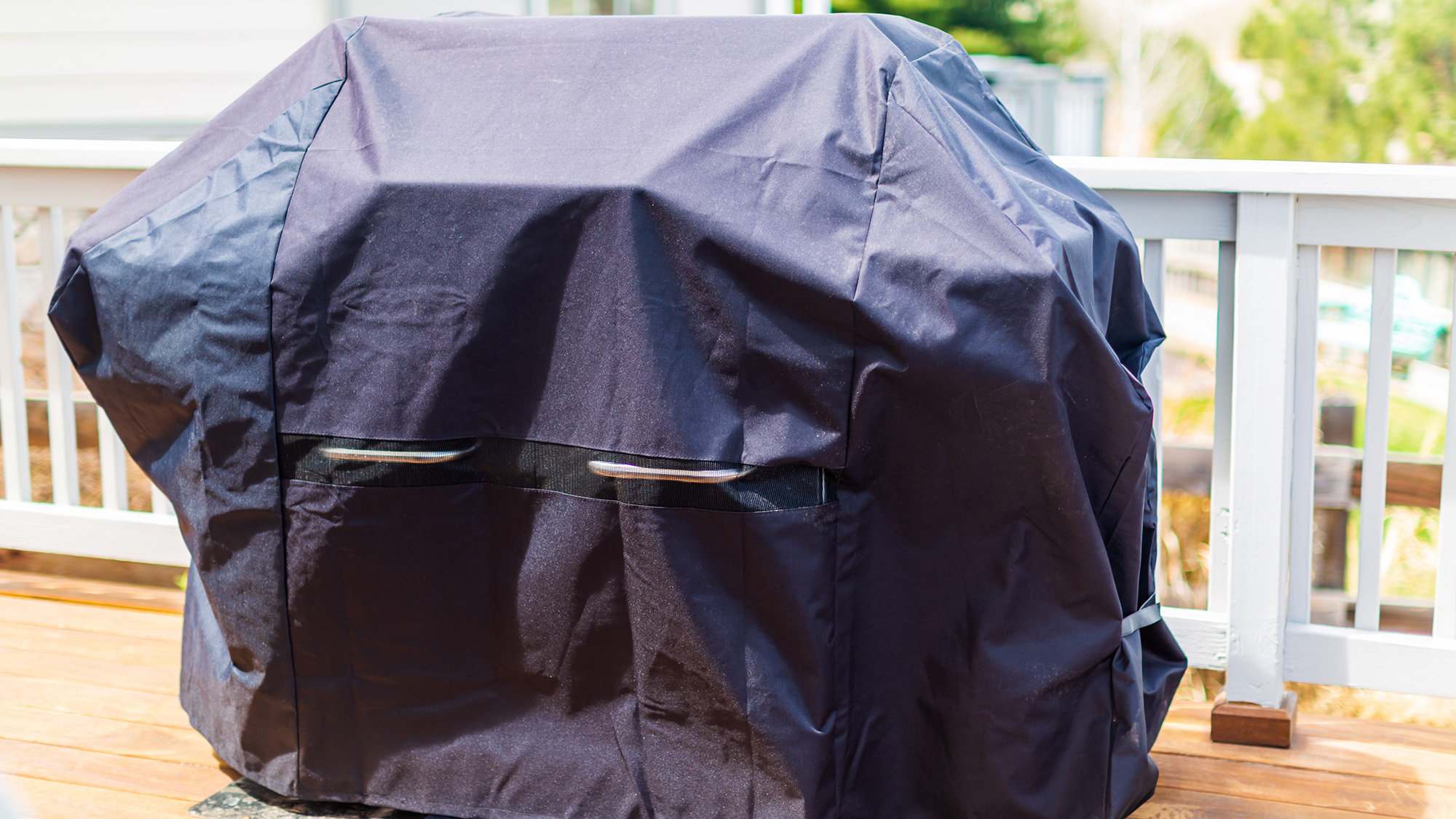
If you’re planning to use a grill outside in the winter, or don’t have a garage or outhouse to store it in over the colder months, you’ll need to look for a sturdy grill that can withstand the elements.
Forte says a proper cover will protect your grill from rain, snow, wind and sun and advises choosing a custom-fitted cover that’s waterproof and UV resistant.
Cooper agrees, “Ensure the cover fits snugly— too large, and it may blow away in the wind; too small, and it won’t provide full protection,” adding, “A good cover not only keeps your barbecue looking its best but also prolongs its life, preventing rust and keeping your food safe from contamination.”







